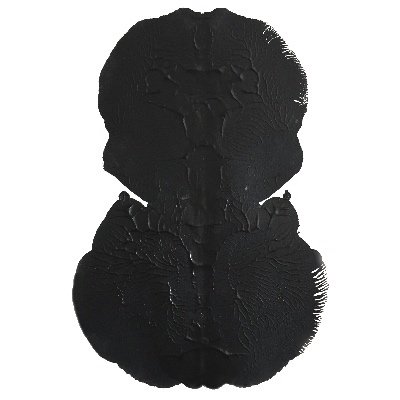This semester I have the opportunity to teach a really cool class at Oklahoma Baptist University; A class all about the violin! Last summer, as I was studying for my general exams I came up with the idea of teaching a class that focuses on some of the details of being a violinist that there just isn't time to discuss and talk about in lessons. There is so much fascinating information and beautiful music out there in this field and so little time to find it that I really feel an obligation to my students to pass on at least a small sliver of what I know. The more I studied for my exams the more I found this information coming up in my own lessons with my professor as well as lessons with my students. And truth be told I was kind of looking for an excuse to keep discussing the violin, researching it, listening to it, watching performances, reading about it, and absorbing it in any way possible. Talk about a violin nerd! I am confessing, right here, in print, to proposing a class purely so that I could continue to study something I love and maybe get a few others excited about it along the way.
This class is a whirlwind tour through some of the important stuff young violinists should know. Each month we focus on a different aspect of the field covering repertoire, composers, teachers, and performers. Given the chance, I could probably teach a class on each of these subjects because there is so much to discuss but I'll take what I can get.
During the month of February we are taking a look at (and a listen to) the incredible wealth of repertoire written for the violin. Granted, it is really hard to limit the information to just one hour a week so I thought I would just leave the leftover notes here for everyone to see (and for my students to hopefully read, listen, watch, take notes and eventually remember) and with any luck maybe someone else will find this stuff interesting too. The following are some general notes on the violin concerto throughout history.
The Concerto
The Concerto can loosely be defined as an instrumental work that maintains contrast between orchestral ensemble and a smaller group or solo instrument or among various groups of an undivided orchestra. Beginning in the 18th century the term was applied consistently to works in 3 movements, ordered fast-slow-fast, for soloist and orchestra, 2 or more soloists and orchestra (concerto grosso) or undivided orchestra. In the late 18th century and for most of the 19th century the solo concerto was a prominent form of virtuosic display. Before 1700 the term applied to pieces in a variety of forms for an even greater variety of performing media, voices and instruments. The violin was a popular choice in every era. It is highly virtuosic, projects well over an ensemble, is versatile and beautiful to watch and also to listen to. Yehudi Menuhin credits the popularity of the violin, and specifically the violin concerto, to its ability to still emotions in the listener and to tug at the heart strings of the audience. I completely agree! It is emotive yet technical simultaneously.
Baroque
The concerto as a genre came into its own at the end of the 17th century. It was considered a progressive offshoot of the sonata, designed for performance with a string orchestra. It was around this time that the violin as we know it was born. Stradivarius, Guarneri, and several others were creating the impeccable instruments that we still admire and imitate today. Italy was alive with excitement for the violin and with the advent of such sublime instruments and a shifted focus, and attention to instrumental music the violin became immensely popular.
In Italy there were 2 primary centers when it came to composition. Rome and Venice. At the head of the Roman tradition sat Archangelo Corelli. In Venice Antonio Vivaldi was considered the master. The Roman approach to the early concerto, specifically credited to Corelli used a small group of soloists - typically 2 violins, cello or lute and continuo - accompanied by a larger string ensemble. This was known as a concerto grosso. Corelli's Op. 6 consists of 12 Concerto Grossi. They are beautiful and lush and still quite popular today. These pieces are accessible to performers of all abilities, as is much of Corelli's music and can be heard regularly on student recitals and in Baroque ensemble performances. It was actually Torelli, another composer from the Roman tradition, and not Corelli however, who is credited with writing the first solo violin concerto. Corelli and his fellow Roman composers used the movement order slow-fast-slow in trio sonatas, concerti grossi, and solo concerti and his style is not nearly as extravagant or showy as Vivaldi's.
